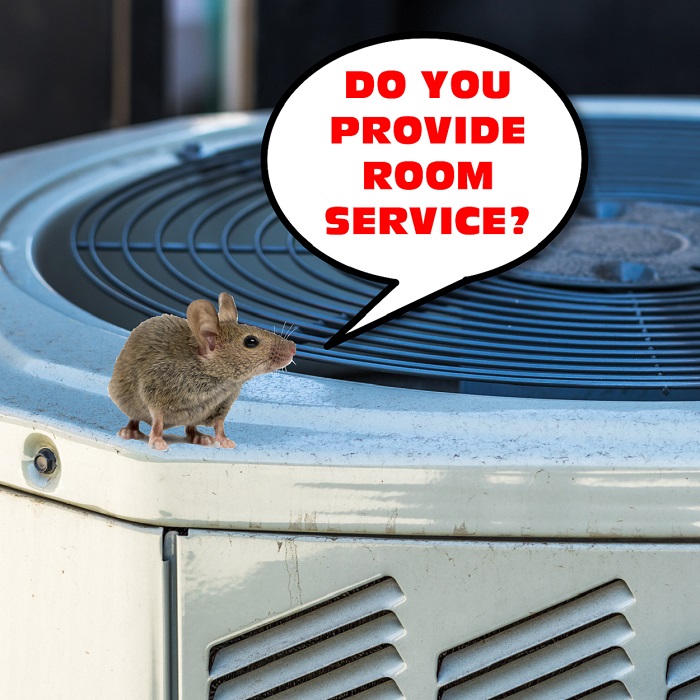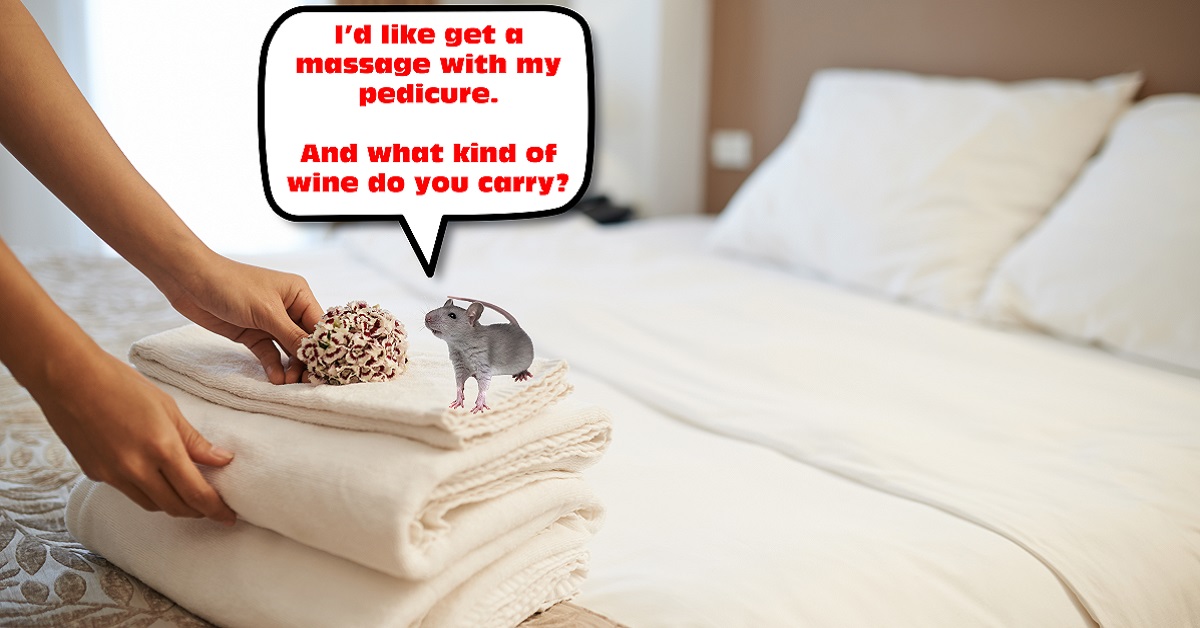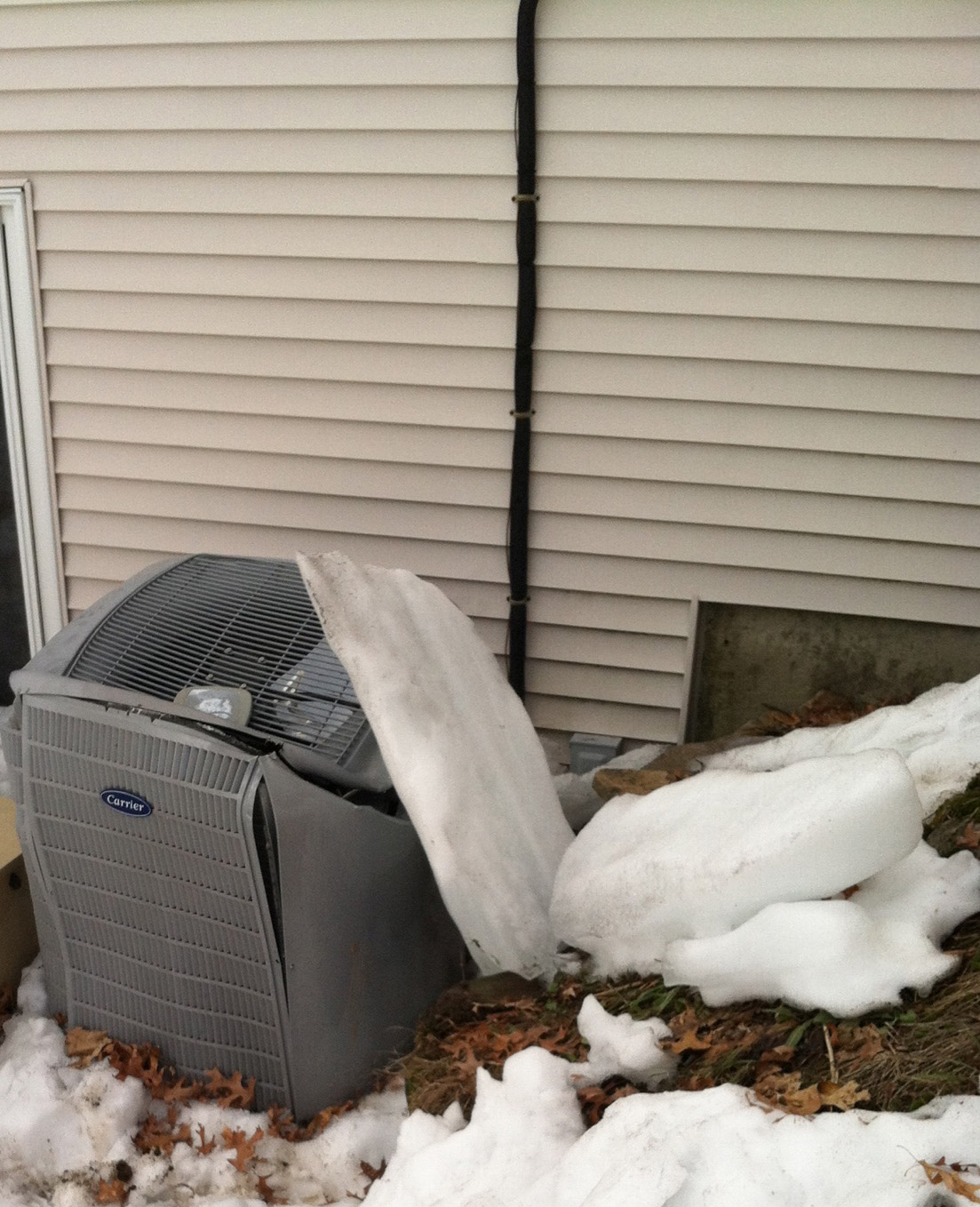Cover Your AC for Winter, Create a Mouse Hotel
Home >

Every winter, some homeowners cover their outdoor air conditioning units with tarps or plastic to winterize them, and every spring, we get a lot of business when their units don’t turn on. Why? Because when homeowners cover their units to protect them, what they’re usually doing is creating a mouse hotel.
Tarps and sheets of plastic create a dry, wind-proof environment, while the electricity running through circuit boards, even when the unit isn’t running, produces a small amount of heat. Once mice discover this, they move in and start building nests. Who doesn’t want to live in a nice dry place with heated floors in the wintertime?
Mouse hotel!

They’ll pay rent, sure, but it’ll be in the form of chewed wires and insulation. They’re also terrible housekeepers. They pee and poop over everything, so when those hot, sticky days return, and you switch your system back on—if it turns on—you may circulate urine and fecal matter into your indoor breathing air and into your lungs. Ever stick your face into the AC when you first turn it on for the season? Bacteria and other indoor air quality contaminants can also settle on surfaces such as tables, doorknobs, and exposed food or beverages.
All that from some itty-bitty mice!
There’s another reason not to cover your AC unit: they’re made to withstand harsh outdoor conditions. Covering them up won’t improve the functionality of your unit.
Some homeowners are concerned about ice falling from their roofs and damaging their equipment, as in this actual field image taken below.

This is a legitimate concern; however, homeowners are better off fastening a piece of plywood over the top of the unit to protect it, leaving the sides exposed. After all, you don’t want to create a mouse hotel!
Just remember to remove the plywood before turning the system back on when the hot weather returns, otherwise you may burn out your motor.
Bonus Tip: If homeowners see ice dams on a roof, it may mean the home’s insulation has been compromised or is non-existent, which was the cause of the damage in the field image above. Blown-in attic insulation can often alleviate this problem while reducing heating and cooling bills up to 20%.
CONTACT US TODAY



As Seen & Heard On







Reach Out to Our Team for More Details
Feel free to call Sanford Temperature Control or fill out the online form for more information. You may also get in touch with our team to schedule an appointment. We look forward to hearing from you.

